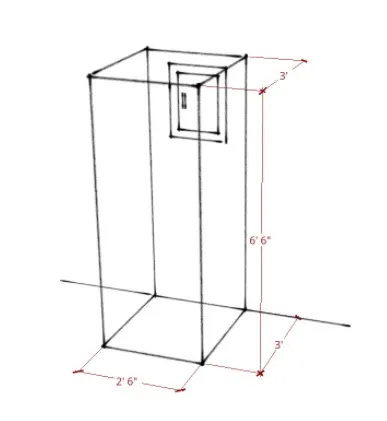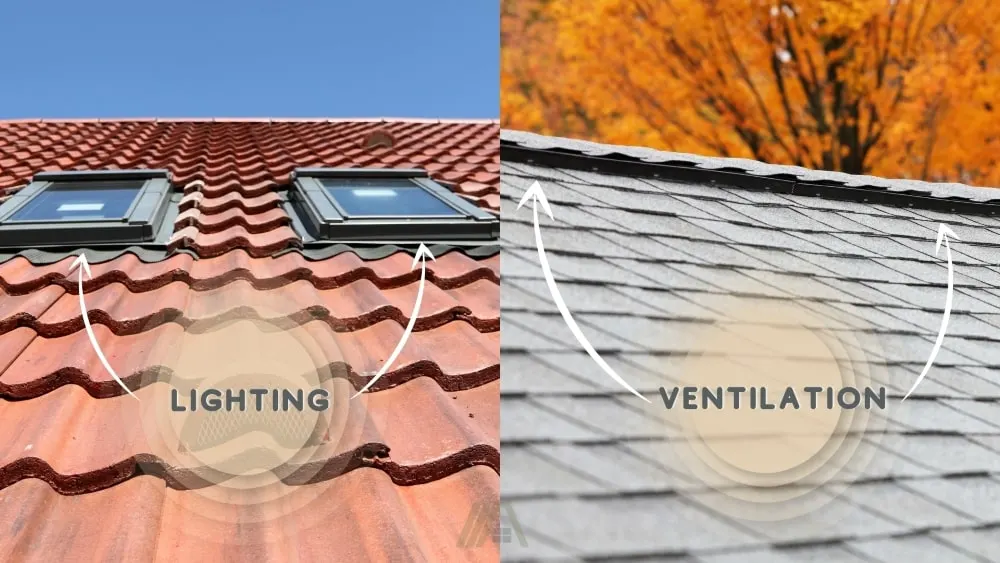Installing a subpanel in the attic might seem like a great idea, but it is not as easy as it seems! The installation must be compliant with all codes and regulations to ensure safety in your home. If you comply with these regulations when installing your subpanel in the attic, you can be assured of safe practices and peace of mind.
When it comes to electrics, I’m always after the approach that brings peace of mind! So, let’s have a look at installing a subpanel in the attic.

You can put a subpanel in the attic provided the clearances of 6’6” height, 36” depth, and 30” width are possible. Nothing should be in the space above and below the subpanel and the panel should be easily accessible. You also need to ensure that the attic is properly ventilated.
IRC, NEC, and Local Codes Govern Subpanel Locations
The IRC, NEC, and local authorities in every State regulate the building industry standards for all Commercial and Domestic buildings. The codes standardize potentially hazardous systems in the building, ensuring the correct building methods are complied with to guarantee a safe and practical building.
These standardizations also allow tradespeople to know what is going on in the system by following the code rather than deciphering the previous tradesman’s work.
When installing a subpanel in the attic, Section E3405 of the IRC applies. This section regulates the location of the equipment as well as the working space and clearances required.
IRC regulations are applicable for all 50 states in the USA, but local building codes should be used together with the IRC regulations, as local codes supersede the IRC regulations.
All subpanel installations should conform to the National Electrical Code (NEC) standards.
How Accessible Is Your Attic?
IRC Section 3405.6 stipulates the required access to the working space in conjunction with Section 110.26(C) (1) of the NEC.
Access to the attic must allow a safe entrance for the maintenance and repairs to the subpanel and equipment. Good practice is to ensure that the entrance to the attic is unobstructed at all times.
The following measurements apply to a space with limited access like an attic:
- If the equipment is installed above a lay-in ceiling, the accessible opening must be 22″ by 22″ (559 by 559 mm).
Does The Attic Allow Proper Clearances?
The figure below depicts the required subpanel clearances.

Section 3405.1 of the IRC stipulates:
- The working space must be clear and unobstructed from the floor to a height of 6.5 ft (2 m) or the height of the equipment, whichever is greater.
In Section 3405.2 it provides further clearance dimensions:
- The acceptable width of the working space must be the width of the equipment enclosure, or 30″ (762 mm), or whichever is greater.
- Enclosure doors and hinged panels should open to at least 90 degrees.
- The space in front of the enclosure should comply with NEC requirements 110.26 (A)(1).
- The maximum height of the working space must be the height necessary to install the equipment.
The exception to this rule for existing dwelling units as per NEC 110.26(A)(3):
- Panelboards of 200 amperes or less are permitted in spaces where the height is less than 6.5 ft (2 m).
According to Section 3405.3 of the IRC:
- The indoor space equal to the depth and width of the subpanel, extending from the floor up to a height of 6 ft (2 m) above the panelboard or the ceiling, whichever is lower, must only house the electrical installation.
- Equipment, piping, and ducts other than those used for the subpanel must not be placed over or under the subpanel enclosure.
- The area above the panelboard can contain foreign systems provided that protection is provided to avoid damages to the electrical equipment of the subpanel caused by condensation, leaks, and breaks.
The exception to this rule is that suspended ceilings with removable panels will be allowed within the 6 ft (2 m) space.
Don’t Store Things Near The Subpanel
For safety reasons, the entrance to and area around the subpanel should be clear of any obstructions. If you need to get to the subpanel in an emergency, you should not trip up over items stored in the way!
If unused items are stored near the subpanel, they could be a potential fire hazard and catch alight if there are any sparks from the subpanel.
You can find this rule in Section 3405.5 of the IRC:
- The working space must not be used as a storage area.
- Subpanels must not be installed in clothes closets, bathrooms, or over the steps of a stairway as per NEC 110.26(b). These areas are generally used as storage locations and are not permitted installation areas according to the regulations.
Is The Attic Lighting Code-Appropriate?
An attic is generally dark and dusty, so if you are going to install the subpanel in the attic, you need to be able to see what you are doing during the installation process and during any required maintenance.
To ensure this the IRC includes Section 3405.7 which says that:
- Artificial lighting must be provided for all working spaces installed indoors and must not be controlled by automatic means only.
- If the space is illuminated by adjacent light, the additional lighting outlets are not a requirement.
- Exception 1 of Section E3903.2, in accordance with NEC 110.26 (D), permits lighting outlets to be controlled by wall-mounted control devices.
Select The Proper Enclosure
Regulations govern the correct enclosure for safety purposes.
Section E3404.4 stipulates:
- Enclosures of panelboards rated 600 volts must be marked with the enclosure-type number as shown in Table E3404.4 (Table 110.28) for indoor use.
- The enclosure must protect against:
- Incidental contact with the equipment
- Falling dirt and liquids
- Circulating and settling airborne dust, lint, and fibers
- Splashing water
- Oil and coolant seepage, spraying and splashing
- Corrosive agents
- Temporary and prolonged submersion

Your Ventilation Must Also Be Up-To-Code
If you have decided that an attic is a great place to install a subpanel, check the IRC and NEC regulations to see if you comply with the code regarding the area’s ventilation. Check your local codes and regulations for compliance too before you begin with the installation.
Proper ventilation is always required in the attic to prevent the subpanel from overheating and perhaps exploding! There are many different ways to provide the appropriate ventilation needed in your attic.
One of the most effective ways to provide the proper ventilation and allow airflow in the attic is using ridge vents. Read through our interesting article, Are Ridge Vents Required By Code, for further insights into this topic.
Check your bathroom fan to see where the exhaust fan vents when removing the hot air from the bathroom. If it vents into the attic, you will have to add ducting to vent the air outside the house. Hot air billowing into the attic from the bathroom can be very dangerous to the subpanel and cause it to overheat!
Furthermore, dryers and bathroom fans are not permitted to vent into the attic as per the IRC.
Our informative articles: Dryer Venting Into the Attic: Is It Safe? and 10 Reasons Why A Bathroom Fan Should not Be Vented Into The Attic, will provide all the information that you need regarding venting into the attic and how it will affect your subpanel installation.
Advantages Of Putting A Subpanel In The Attic
Choosing to install your subpanel in the attic will have several advantages. Some of the best reasons are for practical purposes, whereas others are to maintain the aesthetics of your home.
These are our best reasons to install a subpanel in this location:
- Out of the way. Installing the subpanel in the attic prevents it from using up wall space in the home and keeps it safely away from people!
- Aesthetically pleasing. The subpanel and cables could give your home an industrial look rather than a chic look which might be the best reason for installing it in the attic out of sight!
- Easy distribution point. A subpanel in the attic provides easy routing for cables to other rooms that could otherwise be difficult to access.
While these are all excellent reasons to install a subpanel in the attic, you cannot install it in this location if it violates any accessibility, headspace, and clearance regulations stipulated by the IRC.
Disadvantages Of Putting A Subpanel In The Attic
Probably the biggest disadvantage to installing a subpanel in the attic is accessibility. While it might meet all code requirements, an attic is not the most accessible place to get into and out of.
These are some of the disadvantages when installing a subpanel in the attic:
- Climbing into and out of the attic requires planning and probably another person holding your ladder while you climb up and down!
- If a switch trips, it isn’t easy to quickly access the tripped circuit to reset it.
- Because it’s a low-traffic area, mice, other rodents, and creepy crawlies can invade the subpanel and chew wires, causing disruptions to the electrical supply or builds nests, which could become a fire hazard.
- If a fire does perhaps break out, you will only be aware of it when you smell smoke or see the flames!
Sources
https://www.thespruce.com/why-install-subpanel-in-your-home-1152747
